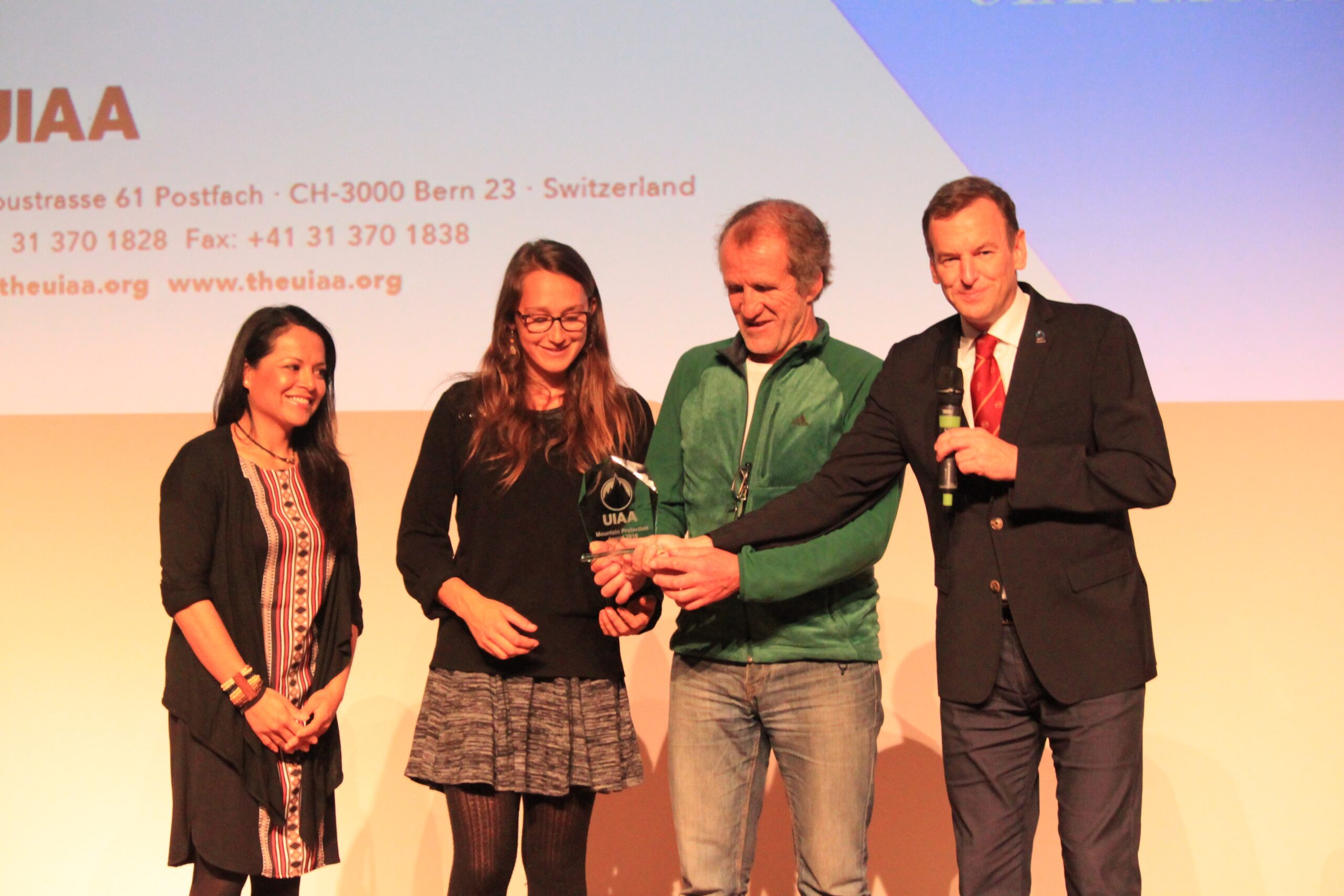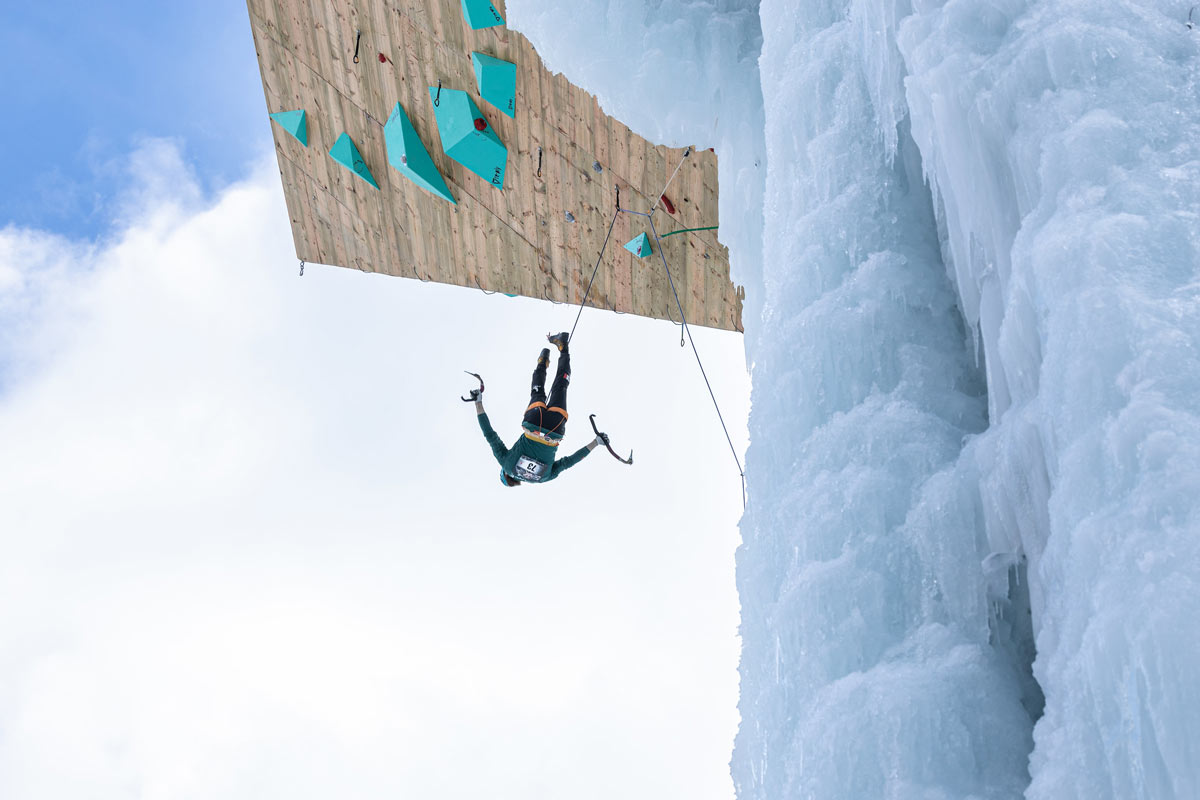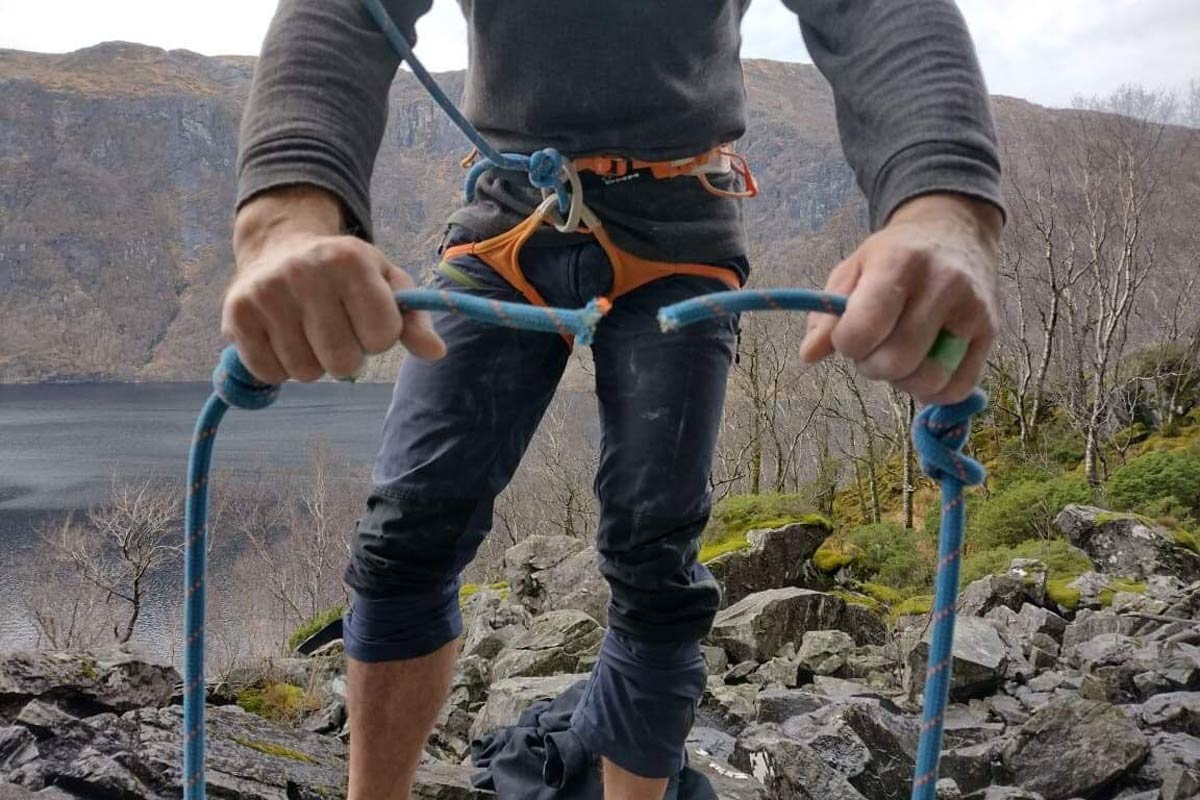oThe upcoming launches of this year’s Mountain Protection Award and Respect the Mountains series, both core UIAA projects in the field of mountain sustainability, provides an opportune moment to talk to Dr Carolina Adler, UIAA Mountain Protection Commission President, about the UIAA and the UIAA Mountain Protection Commission’s important work in this field.
First, and foremost, why is it important that the UIAA is an active player in the sphere of mountain protection?
Carolina Adler: Mountains are our playground and are essential for our existence! As mountaineers, it is in our interest – and our responsibility as mountain ‘stewards’ – to make sure that mountains not only continue to be safeguarded for all, but also for them to be able to continue to fulfil a crucial and healthy ecological function. Mountains play an indispensable role in the provision of water and other key services that all living species – including us! – depend on. Furthermore, when decisions are made as to how to access and utilise these natural ‘goods’, it is important that we as a community of mountaineers also participate in this deliberation and not just stand aside as idle spectators. We need to ensure that our views on these decisions, based on our common interest, are not only consistent with our interest to continue climbing mountains, but also safeguard protection of our mountain spaces.

The UIAA’s work in this area is spearheaded by the Mountain Protection Commission. Tell us a little bit about the MP Commission – how many volunteers are involved, their range of backgrounds, experience and interests.
CA: The MP Commission is primarily tasked with overseeing and implementing the UIAA’s sustainability agenda defined in the Strategic Plan. This in collaboration with other Commissions to make sure that environmental stewardship is considered across all aspects and activities of the UIAA. As of the beginning of 2017, we have ten full members and seven corresponding members. The membership is diverse across almost all continents, except for federations from Latin America. We hope to have new members from that part of the globe in the near future. We also count two expert members, Ang Tshering Sherpa from Nepal and Mandip Singh from India, both with extensive knowledge of mountaineering concerning tourism and recreation and the environmental protection that is called for in promoting these activities. Given the focus of our Commission’s work on environmental protection, most of us have some scientific/academic and/or practical background in dealing with environmental matters in mountain regions, as well as advocacy experience. One future project in the pipeline will entail a full review and update of the UIAA’s own environmental and sustainability guidelines for mountaineering, a process we hope to kick-start later in 2017.
How does the MP Commission work together?
CA: Given our geographic spread across so many countries, it is difficult for us to meet in person on a regular basis; however, we do schedule a full-day meeting once a year. We take the opportunity at this meeting to discuss in depth about our projects, progress and review our strategic and implementation plan and how that aligns with the UIAA’s overall strategy. Our most reliable and frequent means of communication is still email.
When did you become part of the UIAA and what inspired you to initially join the MP Commission and then become President?

CA: I formally came to be a full member of the UIAA’s Mountain Protection Commission in 2013, after a rather serendipitous event in 2012. Soon after I had moved to Switzerland from Australia in late 2011, I found myself presenting my research work on mountains and environmental conservation at a scientific conference in Bern in late 2012. My presentation was on a research assignment I undertook in the far west region of Nepal. I spent a great deal of time there photographing and visiting remote mountain villages and interviewing communities who were seeking to promote tourism. My task was to assess the feasibility of such an endeavour, given the effects of climate change and other environmental and social factors, whilst still promoting sustainable development and poverty alleviation. While presenting my findings in Bern, a member of the UIAA Office who happened to be in the audience later approached me to discuss my experiences with that research. He also asked me if I would be interested in joining the UIAA MP Commission, given my experiences with mountaineering as well. Of course, I had heard of the UIAA before as a long time member of the New Zealand Alpine Club (NZAC), so my response was an enthusiastic and emphatic yes! For me, this was a very encouraging opportunity to not only exercise my expertise on a topic I love, but also a very concrete means to give back to the very community of mountaineers from whom I had gained and learnt so much over the years. Thanks to the support and endorsement from the NZAC, I was nominated as a delegate and accepted into the fold in 2013. I have worked as a very active member of the Commission since that time. However, I always considered that the Commission and the UIAA in general still had much potential to realize on mountain protection whilst promoting mountaineering, and that was the main motivation to consider nominating for the President role and lead that process. It was also the overwhelming support and encouragement from many at the UIAA that led me to consider that option more seriously.

Where does your love of the mountain environment stem from?
CA: My love for the mountains goes back to my childhood. I was born and grew up in Santiago, Chile, and lived with my family on the outskirts of the city bordering the Andes. My father was then – and still is – very fond of the mountains and mountaineering, and this was a passion passed on to me, leading by example. Almost every weekend, we would venture into the mountains to do treks with my family, and so I spent a great deal of time in my childhood playing outdoors and appreciating nature in the mountains. Many memorable instances left a life-long impression on me, for example once when venturing deep into the Maipo Valley and touching snow for the first time or when witnessing the mighty and powerful flight of a condor over the peaks. The ‘loud’ silence that engulfs all the senses when standing amongst that magic landscape, a sense of awe at the expanse and greatness that leaves a deep sense of self-awareness and humility. Also the appeal of mountaineering, the challenge of climbing a mountain and the enduring mark that experience leaves, knowing that the effort is rewarded with an incredible view and a sense of personal achievement that promotes self-improvement and development. My career choices were also very much shaped by these experiences, deciding from a young age that I wanted to study geography, geology, and anything related to the understanding of these places and its people. These are the impressions that mountains have left and continue to leave in me, and a life-long passion to live, work and play in that space.
Do you believe that the profound effects of climate change in mountain regions is something which is taken seriously enough by those in power or appreciated by the wider public?
CA: Over the years, we have seen some progress and improvements in raising awareness and understanding on the dramatic impacts of climate change in mountains – we must recognize that. I do believe that much more could still be done, especially the important role that we as everyday citizens have in making sure we not only mitigate but also adapt appropriately to these impacts. The issue of climate change in mountains is huge, and can be understandably overwhelming for us as individuals to act and address that impact at the spatial and temporal scales that are called for. This is where a critical mass is essential, and the UIAA counts with a critical mass of over three million mountaineers worldwide – that has to count for something! Mountaineers – whether amateurs or professionals, like mountain guides – are constantly in the mountains, and over the years develop a very accurate and attuned observation and ‘sense’ of how change manifests in the mountains, especially when comparing between seasons over the years. This is indispensable knowledge! One that could certainly help to complement the scientific monitoring that nowadays takes place in mountains, albeit not sufficiently enough to cover all regions all of the time – technology and other resources have their limits. Therefore, a collaboration of this sort, in the form of ‘citizen science’, can be a very empowering way for us as a community to contribute to the monitoring of change in our mountains and also help assess the effectiveness of responses and infrastructure that are introduced in mountains to address these impacts. We need means to ‘ground-truth’ our efforts on the ground, and the mountaineering community is best placed to take a very active role on that. This is certainly where the UIAA can help.

The 2017 UIAA Respect the Mountains (RtM) series is about to launch. Two big themes this year are education and the project becoming more international in scope. Tell us a little bit about why these elements are important.
CA: Although there are many positive aspects to highlight and commend about the RtM Series, it is important to acknowledge that we are essentially addressing a symptom and not necessarily the root cause of the problem of waste in mountains – the need to change the way we handle waste in the first place. The issue of waste and pollution in mountains is a chronic problem, as highlighted in this recent UN report in which the UIAA also contributed to[1]. The clean-up events that are part of the series ensure we first highlight and address this problem through action on the ground. This is very important, given the visible and immediate positive impact that these actions have in cleaning our mountain space. However, we cannot continue to do this in isolation of concerted education and awareness raising efforts for how and why we need to stop waste from accumulating in the first place. Through an emphasis on education in this year’s series, we hope to give impetus and importance to the need for positive behavior change as one of many long-term strategies to reduce the impact of waste in mountains. This is also an invitation to the mountaineering community to become more vocal and participate on debates regarding measures to address waste disposal and management – sometimes these are not necessarily appropriate or practical for mountaineers to adhere to! This is valuable knowledge to contribute with, for policy makers and the authorities to take on board in the design of waste disposal measures in the first place. It is about being proactive with solutions in collaboration with our community as well.

The issue of waste and pollution in mountain regions is not only a chronic problem, but it also manifests in different ways in diverse parts of the world. There are diverse geographical as well as cultural contexts that we need to account for when dealing with waste in mountains. What works in one region or cultural context may not necessarily work in another in the same way, and we need to learn from these experiences and come up with diverse ‘fit-for-purpose’ means that are appropriate for each context. This is also another reason for us to expand the scope of the RtM series internationally, so that we can learn from and help address the chronic waste issue in these other places too. Besides, our UIAA mountaineering community travel and climb in mountains all over the world, and we need to set an example by being inclusive and contribute with solutions to the waste problem in these other places as well.
[1] Alfthan, B., Semernya, L., Ramola, A., Adler, C., Peñaranda, L.F., Andresen, M., Rucevska, I., Jurek, M., Schoolmeester, T., Baker, E., Hauer, W. & Memon, M., (2016). Waste Management Outlook for Mountain Regions – Sources and Solutions. UNEP, GRID-Arendal and ISWA. Nairobi, Arendal and Vienna. http://www.grida.no/publications/default/6826.aspx

Applications for the 2017 Mountain Protection Award will open soon. Who should be attracted to this award and who does it benefit?
CA: The MP Award is about acknowledging proactive efforts on mountain protection, which would otherwise not find the recognition or promotion needed to be able to grow and see outcomes in the long term. It is about giving them a ‘leg up’ in these efforts, especially for those initiatives that seek to improve the way we conduct our mountaineering sport in a more sustainable way. Therefore, in the end the beneficiaries are not only the local communities that see a direct benefit of projects that improve their conditions on the ground. We, the mountaineering community, also benefit – by rewarding efforts that ensure a more sustainable way for doing what we love doing, which is in our interest and that of future generations. We hope that the enthusiasm, conviction and innovative spirit to see and implement better and smarter ways of conducting our mountaineering and promote mountain protection continue to be promoted via the MP Award.
For UIAA members, what benefits do the RTM and MPA projects bring; and in addition what support can the MP Commission provide for UIAA members in terms of sustainability/mountain protection issues?
CA: For members, it is about helping us to help them (i.e. you) count on continued enjoyment of the mountain space, knowing that we are doing our collective part to ensure its sustainability over the long term. These collective actions not only have intrinsic rewards that help us ‘feel good inside’ for something we love, but also very tangible results for ensuring we can count on a clean and protected mountain environment for all. The UIAA’s Mountain Protection Commission is always here and keen to hear from members and the public at large with ideas that together we could help develop for that end goal.
Further Reading:
UIAA Mountain Protection
UIAA Mountain Protection Award
UIAA Respect the Mountains



